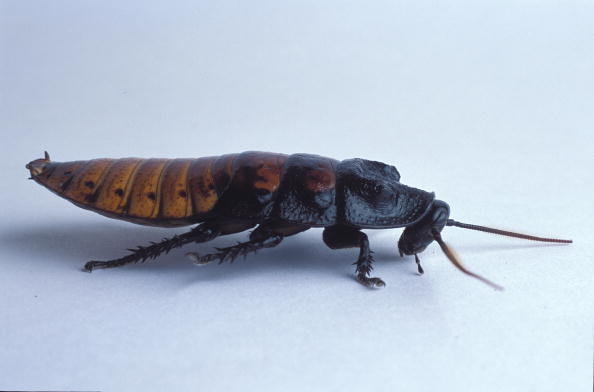Cyborg cockroaches programmed to perform useful tasks
Engineers at North Carolina State University are hopeful these cyborg cockroach units can be utilised as survey drones and sent to disaster stricken areas to seek out trapped humans
Cyborg cockroaches may be the future of high tech home living. Japanese researchers from the University of Tsukuba modified Madagascar cockroaches with cybernetic implants that enable the insects to be controlled as they navigate up the walls and across floors.
The robo roaches or "Calmbots" are part of a project by Digital Nature Group. They installed electrodes, a chip, antenna, a battery and a pixel strapped onto the roaches' back, which can be programmed to transport objects around the home as well as draw on paper and can even act as an audio device.
ã€Archive】先日発表ã—ãŸä½ƒå„ªæ²³ã•ã‚“(@commando1999) ã®ã€ŒCalmbotsã€ã«é–¢ã™ã‚‹è¨˜äº‹ã‚’紹介ã—ã¾ã™ã€‚
— Digital Nature Group (@labDNG) November 6, 2020
A Swarm of Cyborg Cockroaches That Lives in Your House|IEEE SPECTRUM 2020.11.04https://t.co/iMEkdsBEzB
While typical robotics devices may find it difficult to manoeuvre and perform tasks in small spaces, the cyborg roaches are able to roam freely inside homes and are designed to carry out a variety of small tasks. They chose the Madagascar species specifically for its mobility, self-maintenance and ability to hide.
ã€ç ”究紹介】Calmbots (2020)
— Digital Nature Group (@labDNG) November 4, 2020
生物ã®æŒã¤ãƒ¢ãƒ“リティ性,自己メンテナンス性,潜ä¼èƒ½åŠ›ãªã©ã®ç‰¹æ€§ã‚’生ã‹ã—ãŸæ–°ã—ã„インターフェース。高ã„モビリティ性ã®ç²å¾—,オプションパーツã«ã‚ˆã‚‹èƒ½åŠ›ä»˜åŠ ,「åƒãアリã®æ³•å‰‡ã€ã‚’模倣ã—ãŸã‚¢ãƒ«ã‚´ãƒªã‚ºãƒ を開発。https://t.co/2C00Dv5Iuh pic.twitter.com/0xtuiYCevv
The team said these mini cyborg movers can someday be used to fulfil tasks in a variety of places without being noticed. They tested its manoeuvring abilities on carpets, across walls and floors with cables.
"We controlled multiple cockroaches effectively by developing the control based on the principle of worker ants, which exists in a swarm of ants," the team said.
The design of these "calmbots" were made specifically with an algorithm that can deal with individual errors and can call on other fellow roaches to complete the task it could not finish. Another team of engineers is looking into using them for reconnaissance missions with a goal to develop a full army.
Meanwhile, engineers at North Carolina State University are hopeful that these cyborg cockroach units can be utilised as survey drones and sent to disaster stricken areas to seek out trapped humans. The cockroaches were also outfitted with backpacks that double as remote controls equipped with three directional microphones that can steer these "biobots" towards the designated direction.
The tests have worked well in laboratories and researchers have since developed a technology that can control them to stay within a certain area cordoned off by a programmed invisible fence.
The idea behind the development of such "biobots" is to have the ability to deploy them in disaster areas where they can crawl into tiny cracks and crevices of collapsed structures and help workers locate survivors efficiently. The cyborg roaches are made to be sound driven and programmed to seek out sounds and at the same time distinguish sounds of people from that of a leaking pipe.

© Copyright IBTimes 2025. All rights reserved.





















